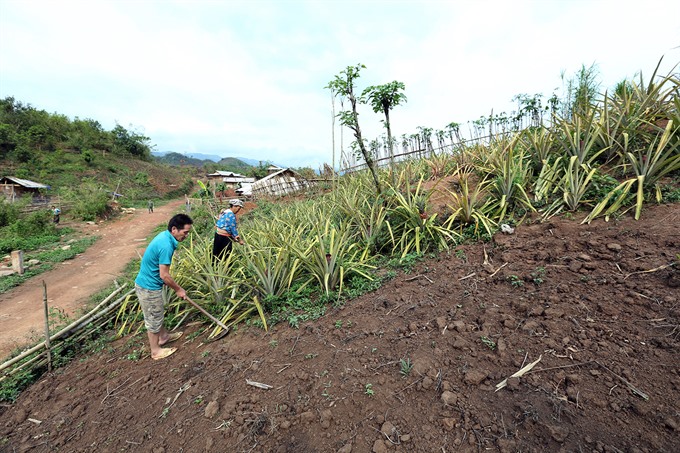 Politics & Law
Politics & Law

Disadvantaged groups are not benefiting from the new Law on Forest and Development, experts said at a conference Wednesday in Hà Nội on amendments to the fifth draft of the Law on Forest and Development.
 |
| Residents of Mường Nhé District in the northern province of Điện Biên grow pineapple trees on land given to them by the Government. — VNA/VNS Photo Anh Tuấn |
HÀ NỘI — Disadvantaged groups are not benefiting from the new Law on Forest and Development, experts said at a conference Wednesday in Hà Nội on amendments to the fifth draft of the Law on Forest and Development.
Although altered five times, the draft has not regulated the rights of disadvantaged groups to own and use forests, especially of the ethnic minorities who will be most affected by the law, said Lương Thị Trường, director of the Centre for Sustainable Development of Mountainous Areas (CSDM).
Her opinion was supported by Nguyễn Thế Dũng, a project coordinator from the Mekong River basin. “None of the draft law’s articles have clarified how they would protect disadvantaged groups’ access to forest resources,” he said.
The draft law only regulates forest ownership of households and communities that have been given forest areas by the Government, meaning only two million of 18 million people who live in or near forests and make their living out of them.
How to ensure the rights to own and use forests for the remaining 16 million people should be considered when making amendments to the law, he said.
His opinions touch on Article 257 of the 2015 Civil Code that came into effect on January 1, regulating the right to exploit and enjoy benefits of assets owned by others for three years, he said.
Community forestry
Statistics from the Centre for People and Forests (RECOFTC) show that some 1.5 million households and individuals in the country have received forest areas from the Government, as well as some 600 organisations and 10,000 communities.
The forest area managed by households and residential communities accounts for some 46 per cent of the country’s total.
However, as of March 2017, only 0.35 per cent of this forest area was certified by the Forest Stewardship Council (FSC), meaning that the majority of households and communities have not received proper support and incentives from the Government and enterprises for better forestry production, said Lương Quang Hùng, a RECOFTC representative.
The notion of community forestry has only appeared in pilot projects and has not been legalised in any legal document, said Nguyễn Quang Tân, another RECOFTC representative.
The significance of community forestry has not been realised since knowledge on the subject is limited, he added.
On the other hand, traditional forest management methods should be legalised to encourage residents’ participation in forest management and community forestry, he added. — VNS




